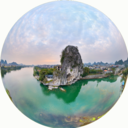0 Likes
在青海湖边,眼前荒凉而广袤的大地,云层低低地贴着地面,透着很多神秘,而更神秘的却是路边的一块路牌“核爆实验场”,这里就是曾经的中国核爆地下实验场,从表面已经很难看出这里和别的地方有什么不同,上世纪八十年代中国裁军以后,这里就退出了曾经的历史舞台,近年来开发成为一个旅游区域,接待来至各地的人们。很值得在这种风高云低的时候在这里捕捉心底泛起的思绪。
...





Qinghai: called as the West Sea, fresh water, sea, sea base Wo Qiang, from the History of the Qinghai said. Wen said the wrong wave Tibetan, Mongolian, said Kukunuoer are means green lake. Old as the Xi Rong, the Han as Xiqiang ground. Late Western Han had set the West Sea northern shore of Lake County, north of the Chinese territory during the Sui Dynasty, 1242 all incorporated into the Mongolian hordes, Mongolian Khanate became the Yuan Dynasty, from the Yuan dynasty when all the Chinese territory, the land is declared the Executive Yuan jurisdiction; Ming is willing to have the Secretary and other flowers; and early Qing Zang Wei, Xining is divided into work after the minister, also known as acting secretary of Qinghai, Qinghai, named for the start for the Republic of China; preliminary design work in Qinghai Executive, after the commanders are willing to side Ninghai , followed by construction of Qinghai Province, the provincial name has changed. Established in 1928 in Qinghai Province, the provincial capital Xining, in Northwest China, is located in the northeastern Qinghai-Tibet Plateau, an area of 722,300 square kilometers, more than 1200 km from east to west, more than 800 kilometers from north to south, the jurisdiction of 6 states, 1 in, 1 city, 51 county-level administrative units, and Gansu, Sichuan, Tibet, Xinjiang border. Eastern Qinghai, known as "Milky lock and key", "sea Tibetan throat", "Jincheng barrier", "Western Regions of the red" and "Jade plug throat" and other titles, showing important geographical location. Qinghai Province is located in the northeastern Qinghai-Tibet Plateau, most parts of 3000-5000 meters above sea level, from west to east, northwest to the middle low, complex and varied terrain, forming a unique plateau continental climate, less precipitation, temperature difference, sunshine time is long. Qinghai Tibetan religion are Buddhism (Lamaism), Islam and Christianity. Tibetan, Mongolian, Tibetan Buddhism, Tu, Hui and Salar Muslims.Qinghai agricultural crops of wheat, barley, beans, potato, rapeseed-based. Mountain west for the pastoral area, is a highland pastoral and pastoral areas in the vast grasslands, lush pastures, is one of China's four famous pastoral areas. Key provincial or national nature reserves, there are 250 kinds of wild animals, which is a national [3] a class of protected animals are wild camels, wild yak, wild ass, Tibetan antelope, argali, white-lipped deer, snow leopards, black-necked cranes, Su Ling, black stork and other 10 species, more than 500 million head of a yak. The territory of towering mountains, diverse terrain, rivers, lakes spread all over. Weiwei Kunlun Mountains across the middle, Tanggula Zhili in the south, standing in the North Qilian Mountains, the vast stretch of undulating grasslands, Qaidam Basin, the vast expanse. Yangtze River, the source of the Yellow River in Qinghai, China is also the largest inland saltwater lake in Qinghai plateau. Three Rivers region is located in China's western hinterland of Qinghai-Tibet Plateau, Qinghai Province, south of the Yangtze River, the source of the Yellow River and Lancang River catchment area. Location as latitude 31 ° 39 '~ 36 ° 12' N 89 ° 45 '~ 102 ° 23', the administrative regions involved include the Yushu, Golog, Hainan Tibetan Autonomous Prefecture of Huangnan four of 16 counties and Tanggula Golmud City Township, with a total area of 302,500 ㎡ K, accounting for 43% of the total area of Qinghai Province.